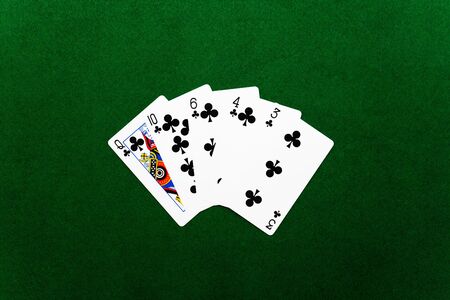Introduction to Court Cards in Tarot
When diving into the world of tarot, court cards often stand out as both fascinating and perplexing. These cards—Pages, Knights, Queens, and Kings—represent people, energies, or personalities that can deeply influence a reading. For anyone living in the UK, understanding court cards isn’t just about memorising traditional meanings; it’s about recognising how these archetypes show up in our day-to-day lives, from the dynamic colleague in a London office to the wise elder guiding a family in Manchester. Grasping the nuances of court cards helps make readings more relatable and practical. In British culture, where subtlety and context matter, interpreting these cards through a local lens can bring fresh insight. Whether you’re new to tarot or seeking to deepen your practice, appreciating how court cards reflect everyday situations across the UK is key to unlocking their full potential.
2. Types of Court Cards and Their Personas
When diving into daily Tarot readings, understanding the Court Cards is essential for unlocking personal insights that resonate with everyday life in the UK. The Pages, Knights, Queens, and Kings each embody distinct archetypes, blending centuries-old symbolism with modern British personas you might encounter on the Tube, at a local café, or even at a Sunday roast.
Breaking Down the Court Cards
| Court Card | Traditional Interpretation | Modern British Persona |
|---|---|---|
| Page | Messenger, student, new beginnings | The apprentice, intern at a tech startup, or a first-year university student finding their way in London |
| Knight | Action-oriented, questing, driven | The young professional cycling to work in Manchester or an activist campaigning for climate action in Bristol |
| Queen | Nurturing, intuitive, wise leadership | The community organiser in Glasgow or the matriarch balancing family and career in Birmingham |
| King | Authority, control, mastery | The seasoned business owner in Edinburgh’s Old Town or the respected local councillor guiding change in a Cornish village |
Archetypes You’ll Recognise Across Britain
Each Court Card not only reflects personality traits but also mirrors people we meet in our day-to-day lives across the UK. For example, drawing a Knight might remind you of those energetic volunteers at Parkrun events every Saturday morning—always on a mission and full of drive. The Queen cards often evoke that neighbour who checks in on everyone during winter storms, offering warmth and wisdom. Understanding these archetypes through both traditional and contemporary British lenses makes your Tarot reading more relevant and actionable.

3. Common Misconceptions and British Contexts
One of the most persistent misunderstandings about court cards in tarot is the belief that they always represent other people, rather than aspects of ourselves. In a British context, this misconception can be compounded by the nation’s traditional reserve and understated approach to self-expression. Many readers in the UK, influenced by centuries-old class structures and social etiquette, may overlook how court cards also mirror our own behaviours, ambitions, or reactions in daily life. Additionally, some assume that the titles—Page, Knight, Queen, King—must align strictly with gender or age, which doesn’t always reflect modern British society’s more fluid views on identity and roles.
The British cultural tendency towards understatement can also lead to misreading the energy of a card. For instance, the Knight of Wands might be seen as “too much” for everyday British life, often associated with brashness or overt confidence—traits sometimes frowned upon or mistaken for arrogance within UK social norms. Yet, in reality, this card could simply be urging one to embrace a bit more boldness when facing typically British challenges, like speaking up in a meeting or navigating London’s competitive job market.
Historically, the hierarchical nature of court cards resonates differently in Britain compared to other countries. The monarchy and aristocracy still hold symbolic power here; thus, interpreting the Queen or King cards can carry layers of meaning tied to leadership styles familiar from public life—think of the steady hand of Queen Elizabeth II versus the reformist energies of contemporary royals. Recognising these nuanced associations helps avoid flat interpretations and instead grounds readings in living British realities.
Finally, some may expect tarot readings to focus only on dramatic events or fateful predictions. However, especially in the UK where daily life is often marked by subtle shifts rather than seismic changes, court cards are invaluable for highlighting small but significant adjustments—like adopting the Page of Pentacles’ practical mindset when budgeting for a weekly shop at Tesco or invoking the Queen of Swords’ clarity during family discussions over Sunday roast.
4. Everyday Encounters: Real-Life UK Examples
Understanding court cards in tarot becomes much more accessible when we see them pop up in familiar, everyday British settings. Let’s take a walk down the high street, nip into the local pub, and see how these personalities might turn up in your daily life.
| Setting | Court Card | British Example |
|---|---|---|
| The High Street | Queen of Pentacles | You’re in Greggs grabbing a sausage roll, and you bump into a friend who always knows about local bargains and community events. She’s warm, practical, and always has time for a natter—classic Queen of Pentacles energy. |
| At Work | Knight of Swords | Your colleague who’s quick with emails, full of clever ideas, and isn’t afraid to speak up in meetings when something’s not right. He takes initiative and sometimes ruffles feathers, just like the Knight of Swords rushing into action. |
| The Local Pub | Page of Cups | That mate who turns up with wild stories after one too many pints, spilling his feelings over a pint of bitter. The Page of Cups brings youthful energy and emotional openness to the table—sometimes a bit too much! |
| The School Run | King of Wands | A parent at the school gates organising the next charity bake sale or footie match—charismatic, confident, and inspiring others to join in. Pure King of Wands leadership on display. |
These court card energies aren’t confined to grand gestures or dramatic moments—they’re alive in small acts and ordinary encounters. Next time you’re queuing at Tesco or chatting with mates over a cuppa, notice who shows up as a Queen, Knight, King or Page in your world. Recognising these archetypes helps you read tarot with real-life insight and adds an extra layer of understanding to your daily interactions.
5. Tips for Interpreting Court Cards with a British Lens
Interpreting court cards in daily tarot readings can feel daunting, especially when trying to relate their meanings to your everyday life in the UK. Bringing a uniquely British perspective helps ground your interpretations and connects them more closely to familiar situations. Here are actionable tips and insightful questions to enhance your court card readings with an authentically British touch:
Consider the Setting and Social Nuance
Court cards often reflect people or personalities in your life, so think about quintessentially British environments: a bustling high street, a local pub, or even the workplace tea round. Ask yourself: Does this card represent someone I encounter in these common settings? How does class, tradition, or subtle social etiquette play into the situation?
Translate Archetypes into Local Characters
Kings, Queens, Knights, and Pages may seem archaic, but they can easily map onto figures from modern British culture—think of the Queen as a wise matriarch in your family or community, the Knight as a passionate activist for a local cause, or the Page as an eager apprentice at work. When you draw a court card, ask: Who in my circle embodies these traits? Is there someone acting in this way within my own context?
Reflect on British Values and Behaviour
British culture is often associated with understatement, dry humour, politeness, and a certain stoicism. When interpreting court cards, consider how these values might colour the actions or attitudes represented. For example, is the Knight of Cups showing romance through subtle gestures rather than grand declarations? Might the Queen of Swords be offering advice with typical British wit or reserve?
Questions to Deepen Your Interpretation
- How would this court card behave at a Sunday roast or during a queue at the post office?
- Does this energy encourage me to keep calm and carry on, or to speak up despite my natural reserve?
- Am I being invited to show leadership (King), nurture others (Queen), take action (Knight), or remain open to learning (Page) within my British social circles?
Practical Advice for Everyday Readings
- Use local slang or familiar references when journaling about court cards—describe someone as “a right character” for a quirky Page, or “the backbone of the team” for a King.
- Notice whether you are being too self-deprecating or modest about your own strengths if you see yourself reflected in a court card—embrace your abilities while maintaining humility.
- Draw parallels between court card dynamics and classic British stories—from Shakespeare’s plays to contemporary TV dramas—for richer insights.
By weaving these cultural cues into your tarot practice, you’ll find that court cards become relatable guides rooted in your everyday reality. Next time you pull one of these figures from your deck, let them speak in accents and attitudes you know well—their messages will feel much closer to home.
6. Bringing It All Together
Understanding court cards in daily tarot reading isn’t just about memorising meanings; it’s about weaving their dynamic energies into your everyday life across the UK. Whether you’re in bustling London, the creative streets of Manchester, or a quiet village in Wales, these cards offer relatable archetypes that echo real people and situations around you. The Page could mirror your new flatmate keen on exploring Shoreditch’s art scene, while the Queen might reflect that wise colleague who always knows where to find the best cuppa.
The key takeaway is to approach court cards as living characters—think of them as people you encounter on the Tube, at work, or during family gatherings. Notice how each court cards traits appear in your daily experiences: ambition, curiosity, empathy, or even stubbornness. This perspective makes your readings more grounded and culturally relevant to UK life.
Don’t shy away from drawing parallels between the suits and British culture: Pentacles with practical money matters (like navigating house prices), Cups with emotional connections (from pub banter to heartfelt chats over tea), Swords with sharp British wit, and Wands with entrepreneurial spirit often seen in start-up hubs.
By integrating court card insights into your regular tarot practice, you’ll not only strengthen your intuition but also deepen your understanding of yourself and those around you. Tarot becomes less abstract and more like a trusted mate guiding you through daily ups and downs. So next time you pull a court card, ask yourself: Who does this remind me of? What situation does this reflect in my life today?
In essence, let these royal figures become familiar faces on your personal tarot journey—each offering unique advice that resonates within the vibrant tapestry of UK life. Embrace their messages and watch as your readings gain new depth, relevance, and a touch of local flavour.

